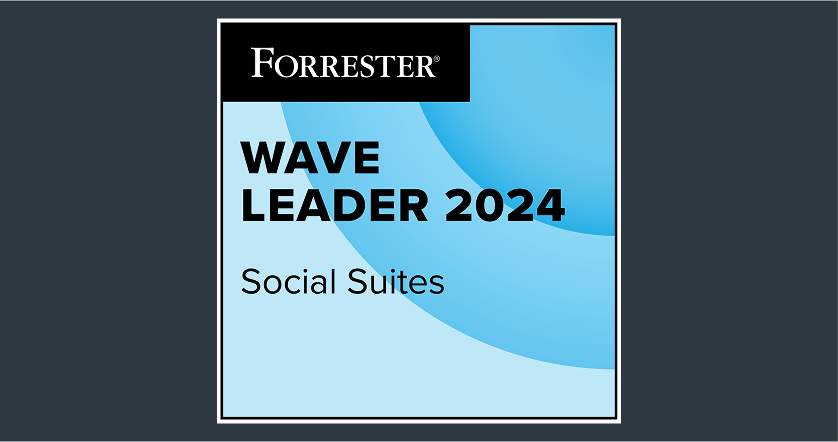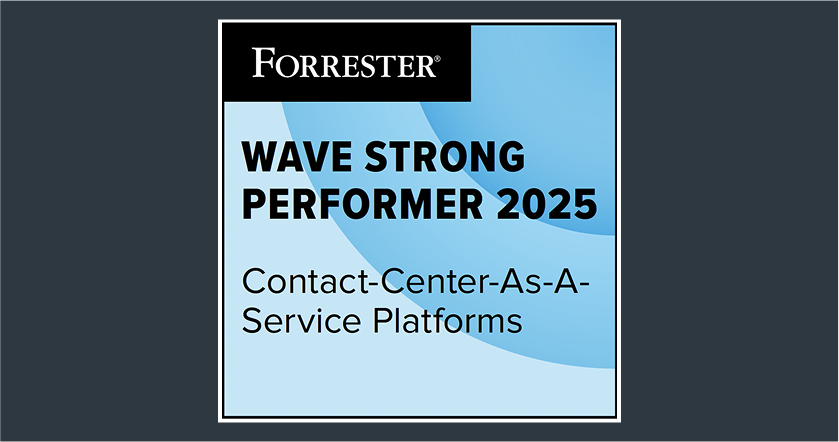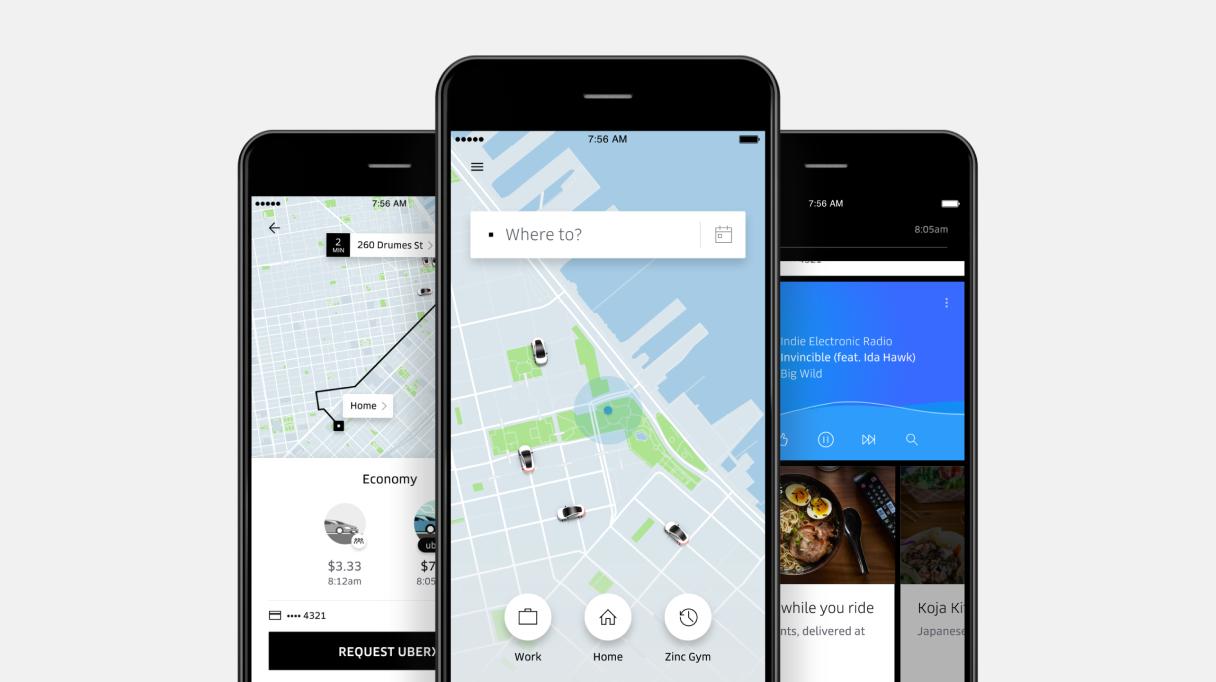What is customer communication?
Customer communication refers to the strategies and practices a business uses to interact with its customers across various customer service channels, including email, social media, phone calls, live chats and more. It encompasses every customer touchpoint and interaction between you and your clients, whether a quick query on social media or an in-depth conversation via phone or email.
Today, each customer interaction is an opportunity to reinforce your brand's value, solve customer issues and enhance their overall experience with your company. A well-timed email addressing a customer's concerns, a quick and empathetic response on social media or a helpful and informative phone call can lead to stronger customer retention, increased satisfaction and a positive impact on your bottom line.
Customer communication vs. Marketing communication
Customer communication and marketing communication are two key aspects of your company’s overall communication strategy. Let's explore their differences and see how they complement each other:
Factor | Customer communication | Marketing communication |
Clarity | Direct, responsive and empathetic communication to resolve specific issues or queries | Broad and consistent communication to promote understanding of products/services |
Empathy | High emphasis on customer empathy to address customer concerns and needs | Moderate focus on empathy to connect with the audience's emotions |
Active Listening | Crucial for understanding and addressing customer feedback | Less focus on listening and more on broadcasting messages |
Personalization | High level of personalization based on individual customer data | Moderate level of personalization through targeted campaigns |
Interaction | Two-way interaction with immediate feedback | One-way communication with delayed or indirect feedback |
Response time | Requires prompt responses to ensure customer satisfaction | Response time varies, often not immediate |
6 types of customer communication channels for businesses
Customers have diverse preferences when it comes to communication. Some prefer the immediacy of a phone call, while others may favor the convenience of texts, social media or emails. By offering multiple communication channels, you can meet customers where they are, providing support that is both accessible and efficient 24/7. Let’s explore some key communication channels predominantly used in 2024.
☎️ Phone calls
Phone calls remain one of the most effective customer communication channels, particularly if you prioritize direct and personalized interactions. They offer a real-time medium ideal for resolving time-sensitive issues and handling complex troubleshooting. In an era dominated by digital customer service, the personal touch of a phone call can be a distinguishing factor in building and maintaining strong customer relationships.
🚀 Advantages
Immediate response: Phone calls eliminate the delays often associated with email or virtual communication. This immediacy facilitates quick decision-making and rapid issue resolution, which is crucial for maintaining customer satisfaction.
Personal connection: The human voice conveys emotions, tone and nuances that text alone cannot capture. This emotional depth creates more meaningful and empathetic interactions, which are key to fostering trust and building rapport with clients and partners.
💡 Use cases
Customer support: When customers face urgent issues, they often prefer phone support due to its speed and directness. The ability to speak with a live representative provides reassurance and allows for more nuanced, personalized assistance.
Customer feedback and surveys: Phone calls are particularly effective for gathering in-depth feedback and conducting customer surveys. For example, a company might contact users via phone to gain detailed insights into their experience with a new product, which can then be used to drive actionable improvements and create a more tailored user experience.
🌍 Global Reach Indicator
Did you know that more than half of retail customers with urgent issues prefer phone support for their conversations, while approximately 30% favor text messaging? When it comes to customer communication, people have different preferences based on the urgency and nature of their concerns.
✉️ Email communication
Email is vital for addressing non-urgent inquiries or complex issues requiring detailed explanations. Due to its convenience, speed and user-friendliness, it is an essential channel for businesses to communicate with customers.
🚀 Advantages
Documentation: Emails provide a written record of all interactions, making it easier to track customer inquiries, maintain accountability and refer to past communications. This is especially valuable when complex issues or long-term customer relationships require detailed historical records.
Broad reach: With billions of users worldwide, email lets you connect with a vast and diverse audience. Its universal adoption means you can easily reach customers across different regions, time zones and demographics.
💡 Use cases
Customer service: Email is the go-to tool for addressing non-urgent customer inquiries that require detailed responses. It's the perfect platform for providing comprehensive support, ensuring that customers receive the information they need in a clear and organized manner.
Marketing and promotions: Email is a powerful tool for keeping customers informed and engaged. Companies often use it to send newsletters, special offers, and updates as part of customer retention strategies and foster customer loyalty by keeping customers connected to the latest developments.
🌍 Global Reach Indicator
A study reveals that by 2025, there will be approximately 4.59 billion email users worldwide. Emails are convenient. In customer communication, they provide a reliable way to share information and maintain a professional record of exchanges quickly.
💬 Live chat
Live chat is designed for speed and efficiency, with minimal wait times and 24/7 availability. Imagine getting instant answers to your questions anytime—day or night. Modern live chat software also lets users switch from chat to voice if the conversation needs a more personal touch.
🚀Advantages
Live chat comes with a host of benefits for businesses and customers alike:
24/7 availability: Keep the chat going around the clock. No matter the time zone, your customers can get support whenever needed.
Efficient inquiry management: Handle multiple inquiries at once. This cuts down on wait times and boosts the efficiency of your support team.
Personalized customer experience: Live chat feels personal. Customers feel they are receiving personalized attention from your company representative.
💡 Use cases Here’s how different industries use live chat to boost their customer service:
E-commerce platforms: Online retailers use live chat to help with product questions, order tracking and returns. It makes shopping smoother and more enjoyable.
Financial services: Banks and financial institutions use live chat to address inquiries about accounts, transactions and other services. It’s a secure way to offer support to your end-users.
🌍 Global Reach Indicator
In 2022, around 81% of customers expressed satisfaction with live chat support, establishing it as one of the most effective resolution channels for companies and their customers.
Must Read: The 11 Best Live Chat Tools for Customer Service in 2024
📱Social media
Social media has completely transformed customer service. With millions of users online, these channels offer a direct way for companies to connect with customers. These channels have become indispensable for addressing customer concerns swiftly and publicly, demonstrating your company’s commitment to delivering excellent service in real time.
🚀Advantages
Engaging with customers on social media offers several key benefits:
Enhanced visibility: When you resolve issues publicly on social media, it showcases your company’s transparency and dedication to customer service. This kind of visibility often leads to a positive brand image on social media, as potential customers can see how you handle problems and respond to feedback in real time.
Increased customer engagement: Social media enables ongoing, dynamic interaction with customers. This constant customer engagement not only helps in resolving issues but also builds stronger relationships, fostering greater customer loyalty and encouraging brand advocacy.
💡 Use cases
Numerous companies effectively utilize social media to enhance their customer service:
Airlines: Major airlines like Delta and American Airlines use X (formerly Twitter) to provide real-time flight status updates, quickly address customer inquiries and manage disruptions. This proactive communication improves the overall customer experience, especially in high-stress situations like delays or cancellations.
Retail brands: Retailers utilize platforms like Instagram and Facebook to manage customer service inquiries, resolve issues and engage with customers through comments and direct messages. By addressing customer concerns where they naturally spend their time, these brands create a more seamless and satisfying customer experience.
🌍 Global Reach Indicator
Most organizations in the United States say that they will use social media channels in customer experience. That’s not all—roughly 53% of respondents to a Statista survey report use social media for customer service.
Good Read: How to Implement Social Media Customer Service Successfully
📚Knowledge base
A knowledge base serves as a centralized hub of essential information, providing employees and customers with easy access to the resources they need, whenever they need them. It’s an invaluable tool for storing guides, FAQs, training courses and onboarding videos, empowering users to find answers independently and reducing the demand for direct support.
🚀 Advantages
Setting up a knowledge base requires some upfront effort, but the long-term benefits make it a worthwhile investment:
Time efficiency: Once established, a knowledge base significantly reduces the time spent answering repetitive questions or guiding employees through standard procedures. It streamlines customer service operations, allowing your support and HR teams to focus on more complex tasks that require human intervention.
Improved self-service: A well-structured knowledge base enables users to find answers to their queries independently. This reduces the burden on your support team and enhances the customer experience by providing instant solutions without the wait.
💡 Use cases
Knowledge bases are versatile and can be leveraged in various customer service scenarios:
Customer support: A comprehensive knowledge base allows customers to resolve issues without waiting for a support agent. Whether through an FAQ chatbot or step-by-step troubleshooting guides, customers can quickly find the information they need, leading to faster resolution times and higher satisfaction.
Employee onboarding: New hires can access onboarding videos, standard operating procedures (SOPs) and training materials within the knowledge base. This minimizes the need for hands-on guidance from supervisors, ensuring that new employees can get up to speed quickly and efficiently, while also providing a consistent onboarding experience across the organization.
📣 Do You Know?
According to Statista, 88% of customers in the United States expect brands or organizations to have self-service support portals. This reflects a growing demand for accessible, user-driven support solutions.
🌎 Online community
A community portal is an online platform where customers, employees, and partners can interact, share insights, ask questions, and provide answers. It creates a dynamic space for peer-to-peer support, allowing users to tap into the community's collective knowledge. Community portals are particularly valuable if you offer complex products or services where customers can benefit from shared experiences and troubleshooting advice from other users.
🚀 Advantages
Building a community portal offers multiple advantages, not only for customer engagement but also for your brand’s overall ecosystem:
Peer-to-peer support: Customers can ask questions and receive answers from community representatives and other users. This relieves some of the pressure from your support team, allowing them to focus on more intricate issues while the community addresses common inquiries.
Enhanced customer engagement: A community portal fosters a sense of belonging and encourages active participation. Engaged customers often become brand advocates, offering tips and helping others, which enhances loyalty and customer retention.
Crowdsourced solutions: The community's collective knowledge can lead to innovative solutions and ideas that may not emerge from internal teams alone. Customers often bring fresh perspectives on using or improving a product or service, enriching your overall value proposition.
💡 Use cases
Community portals are particularly effective in the following scenarios:
Product support: Technology companies, for instance, often use community portals to help customers troubleshoot software issues. Users share solutions and workarounds that have worked for them, creating a knowledge base that grows organically over time.
Customer advocacy: Imagine a fitness brand using a community portal to share success stories, workout tips and nutrition advice from experienced users. This would be a great way for companies to foster stronger customer connections.
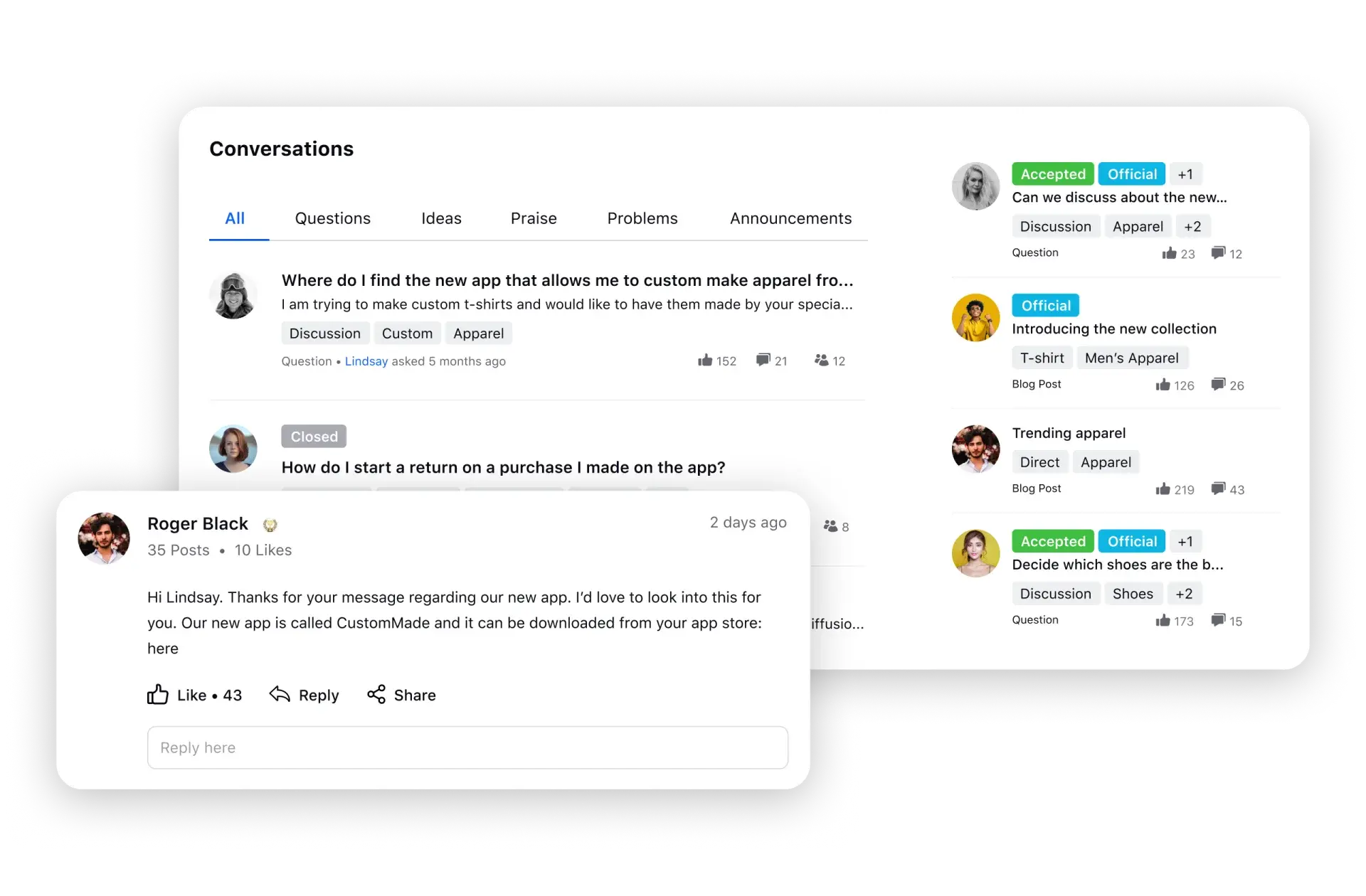
Read More: How to build an online customer community in 2023
Best practices for effective communication with customers
Improving customer communication isn’t always easy. Finding ways online is simple, but implementing them takes careful planning and commitment. Better communication saves money and boosts efficiency. Here are some actionable tips to help you get started:
Know your customer
To truly connect and meet your customers' needs, taking time to know them is essential. Here's how you can incorporate this practice into your daily customer communication:
Enable personalization: Tailor your communication to each customer's preferences and past interactions. Use their names, refer to previous purchases or address specific concerns they've had.
Segment your customers: Divide your customer base into segments based on demographics, behavior or purchase history. This allows for targeted communication that resonates with each group. For example, you might send different marketing messages to first-time buyers than long-term customers.
💡Pro Tip
Use contact center CRM systems to track customer preferences, history and interactions. This data can help tailor communications, from addressing customers by name to offering personalized recommendations and solutions.
Actively listen and show empathy
Active listening is more than just hearing the words a customer is saying. It involves fully concentrating, understanding and responding thoughtfully to what the customer is expressing. When a customer feels like they’re simply another ticket in a queue, the interaction becomes transactional, and the opportunity to build a lasting relationship is lost.
Similarly, in customer communication, empathy means putting yourself in the customer's shoes and acknowledging their emotions. Whether they’re frustrated with a product issue, anxious about a delayed service, or confused about a new feature, responding with empathy can diffuse tension and create a positive experience even in challenging situations.
However, in high-volume environments, it’s easy to treat customer interactions as just another task to complete. The pressure to resolve issues quickly can lead to a more robotic, less personal approach, which customers can easily pick up on.
💡Pro Tip
Reflective listening is a powerful technique to counter the stress of high volumes. Reflective listening serves two main purposes: it confirms understanding, ensuring that there are no miscommunications, and it demonstrates that you are fully engaged in the conversation. This simple yet effective approach can turn a potentially negative interaction into a positive one, leaving the customer feeling respected and valued.
Implement omnichannel communication
Omnichannel communication ensures customers have a seamless experience across various contact center channels. Whether they contact you via phone, email, website or social media, your service quality should remain high and exceptional.
It’s essential to note that managing multiple channels can be challenging. Use tools like conversational AI platforms and CRM systems to streamline the process. Chatbots, for example, can handle routine inquiries, freeing up your team for more complex issues.
😊 Good to know
With Sprinklr Service, you can seamlessly unify customer case management across over 30 digital channels — all on a single, centralized platform.
Sprinklr’s unified agent console lets your agents maintain a comprehensive 360-degree view of each customer, ensuring no detail is missed. Your customers can effortlessly switch between channels and your agents will be automatically alerted when this happens, allowing them to pick up the conversation exactly where it left off. This ensures a smooth, uninterrupted customer experience, no matter the channel.
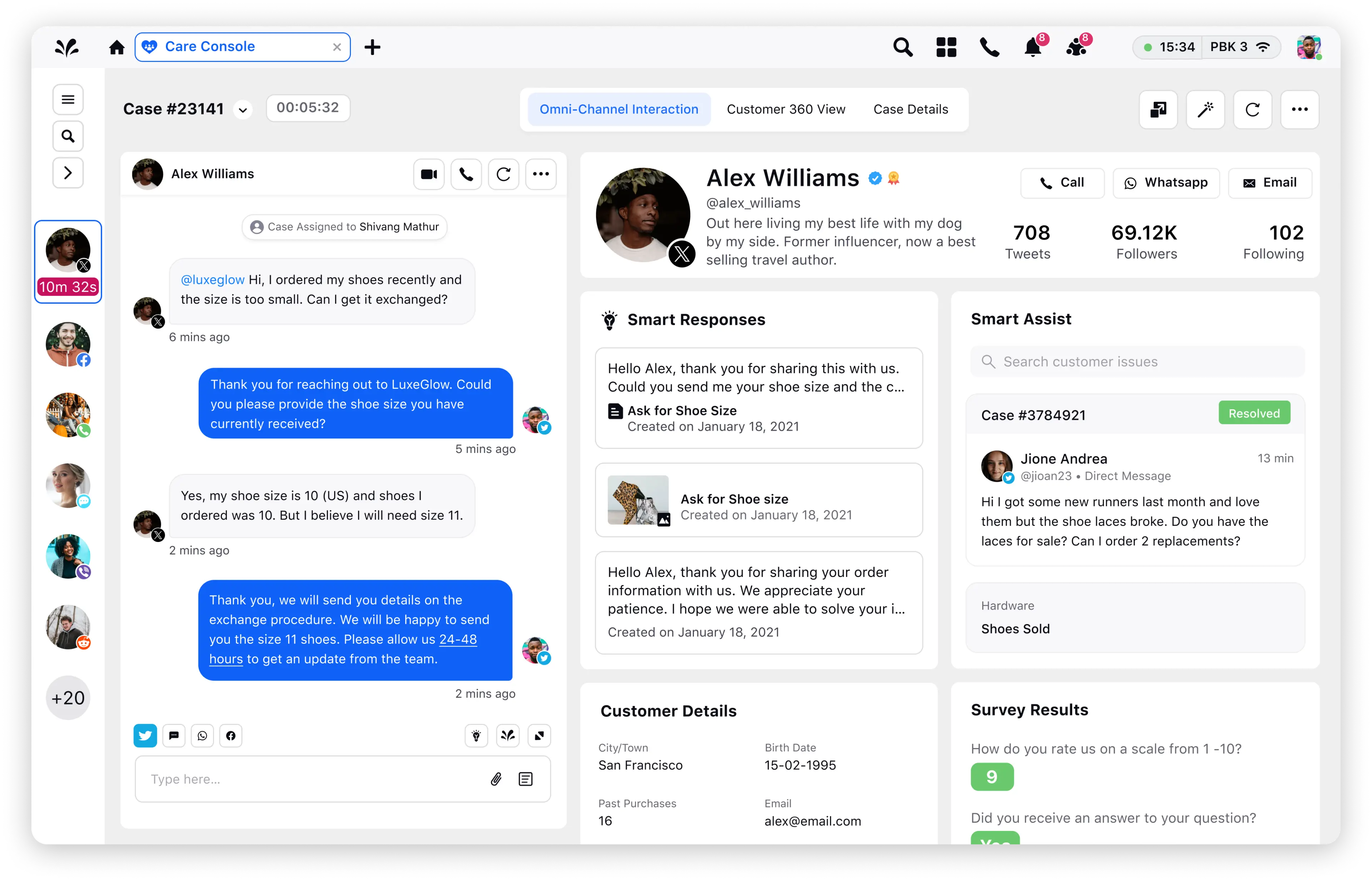
Get a single-screen view of all customer interactions
Collect feedback regularly
Gathering and acting on customer feedback regularly is essential to ensuring effective customer communication. One of the most straightforward methods is conducting customer surveys. These surveys should be carefully designed with clear, relevant questions that can yield actionable insights.
For example, after a customer support interaction, you might ask, "On a scale of 1 to 10, how effectively did our support team resolve your issue?" This type of direct question helps you measure specific aspects of your service and makes the customer feel valued and integral to the service improvement process.
Beyond traditional surveys, social listening is another powerful tool for collecting feedback and understanding customer sentiment. By actively monitoring comments, reviews, and messages on social media, you can quickly identify and address concerns.
📣 Do you know?
Modern omnichannel survey software has evolved to include conversational capabilities. The technology automatically converts traditional survey questions into a conversational format that can be executed by a chatbot, asking relevant questions and gathering feedback in real time.
These conversational surveys are conducted directly within messaging channels, significantly boosting response rates. The result? You gain valuable consumer insights, often difficult to obtain through traditional methods.
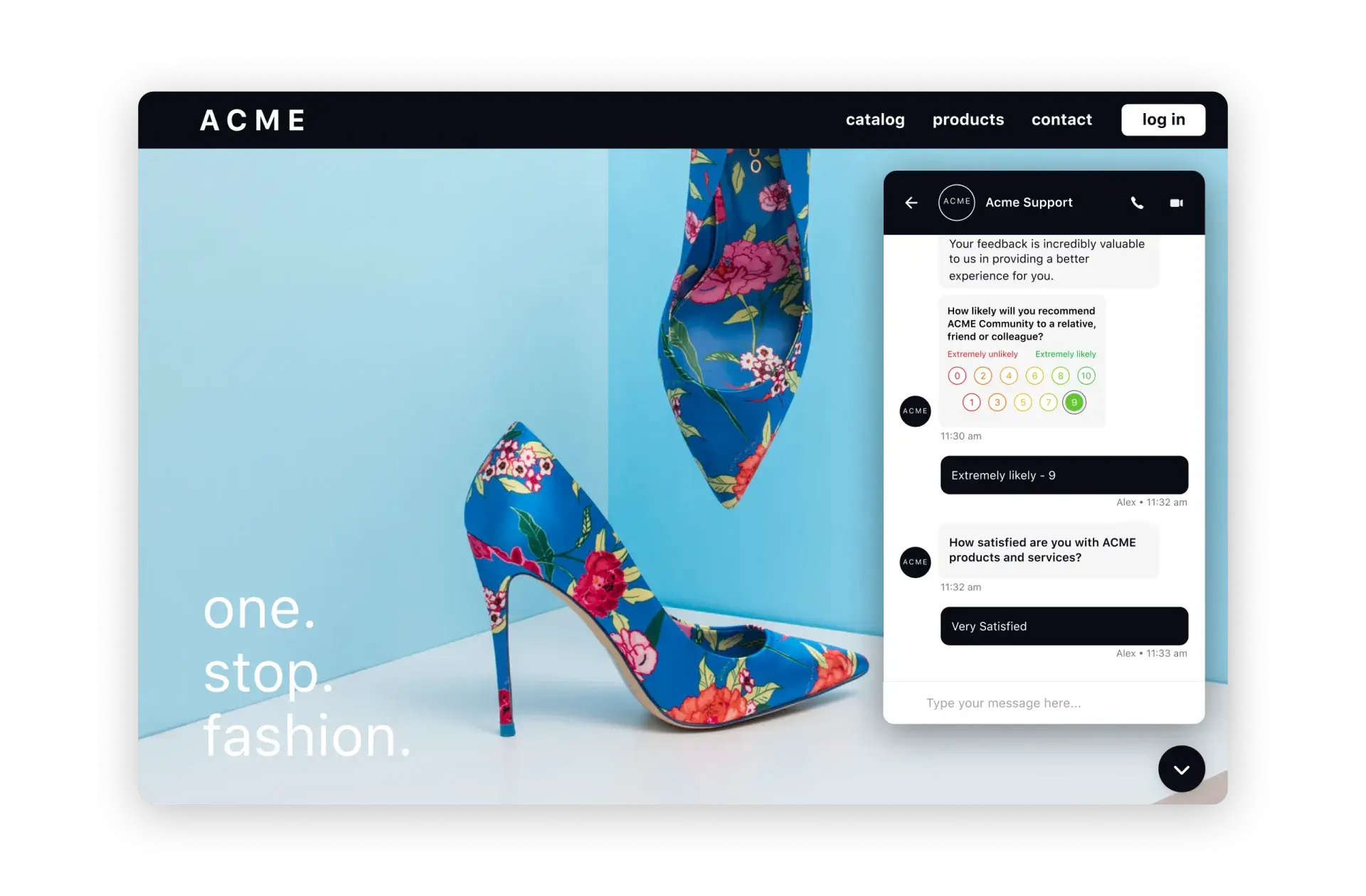
Key metrics that matter most in customer communication
Metrics are more than just numbers. Tracking the right ones can optimize customer communication and service efforts. Let's explore them:
1. First contact resolution (FCR)
FCR measures the percentage of customer inquiries or issues resolved during the first interaction, without the need for follow-up. A high FCR indicates that your communication is clear, effective and meets customer needs promptly. This metric is crucial because it directly impacts customer satisfaction and reduces operational costs by minimizing repeat contacts.
2. Customer satisfaction score (CSAT)
CSAT is a straightforward metric that gauges customer satisfaction after a specific interaction, usually through a simple survey. Typically, customers are asked to rate their experience on a scale of 1 to 5. High CSAT scores reflect positive customer experiences, indicating that your customer engagement strategies are resonating well with your audience.
3. Net promoter score (NPS)
NPS measures customer loyalty by asking one simple question: “On a scale of 0 to 10, how likely are you to recommend our service/product to a friend or colleague?” Customers are classified as promoters (9-10), passives (7-8), or detractors (0-6). NPS is a powerful indicator of long-term customer satisfaction and the likelihood of generating word-of-mouth referrals. Learn how to improve the net promoter score of your brand.
4. Response time
Response time is the average time it takes for your team to respond to customer inquiries across various channels. Faster response times are generally associated with higher customer satisfaction, as customers appreciate timely and attentive service. Tracking response times helps you identify bottlenecks in your communication processes and optimize for quicker resolutions.
5. Interaction volume:
Interaction volume tracks the number of customer interactions across all communication channels. Monitoring this metric helps you understand demand patterns, allocate resources effectively and identify any spikes that may indicate underlying issues in your service delivery.
6. Sentiment analysis
Sentiment analysis involves analyzing customer communication to determine the emotional tone behind the messages. It helps in gauging overall customer sentiment, allowing you to proactively address negative trends before they escalate.
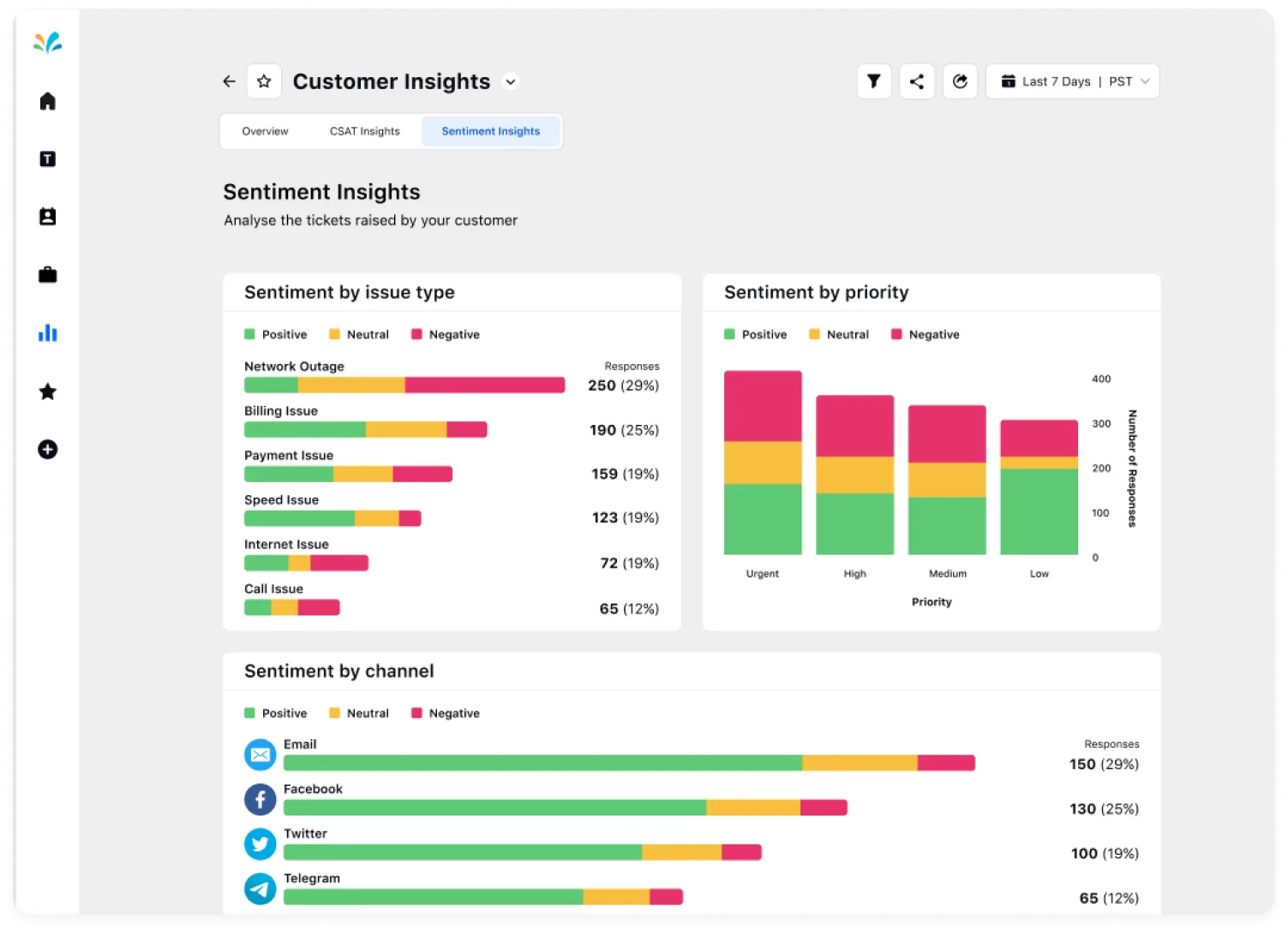
7. Channel effectiveness
Channel effectiveness measures how well each communication channel performs in terms of customer satisfaction, resolution rates and engagement levels. As a result, you can identify which channels are most effective and where there may be opportunities to improve or expand your communication efforts.
Conclusion
Effective customer communication is crucial, but it can be challenging. You may face hurdles like maintaining a consistent brand voice, managing data overload and navigating the complexities of omnichannel communication.
This is where Sprinklr’s Unified-CXM platform steps in. The AI-first unified platform centralizes case management, agent desktops and customer data into one cohesive environment. This creates a seamless agent experience that turns every customer interaction into a consistent and personalized journey. The result? Improved communication that resonates long after the conversation ends, leaving you with satisfied agents and even happier customers.
For more information, schedule an expert-led demo today!
Frequently Asked Questions
Thank you for contacting us.
A Sprinklr representative will be in touch with you shortly.
Contact us today, and we'll create a customized proposal that addresses your unique business needs.
Request a Demo
Welcome Back,
No need to fill out any forms — you're all set.
